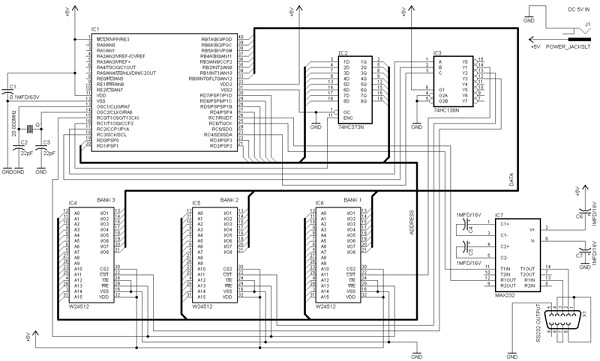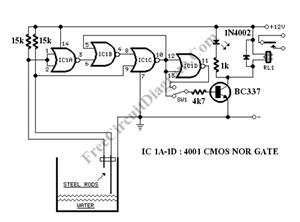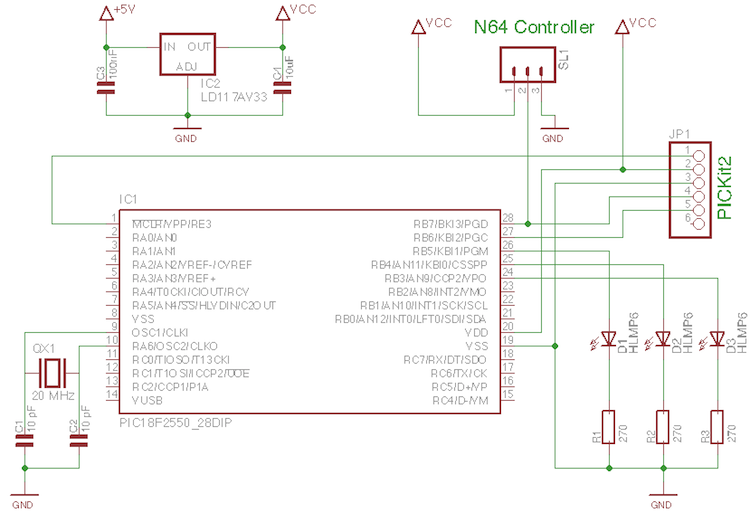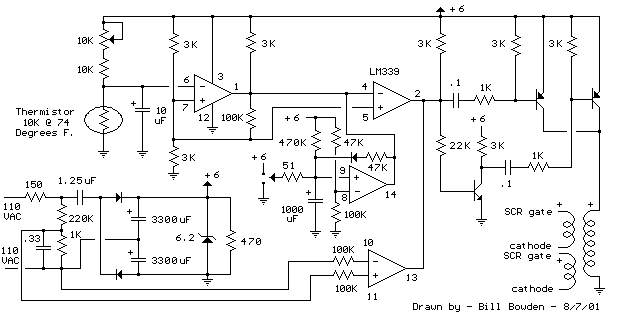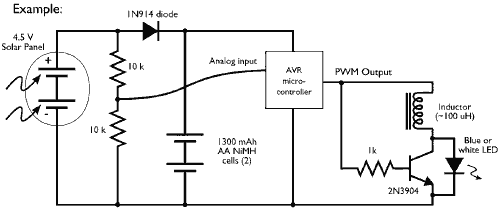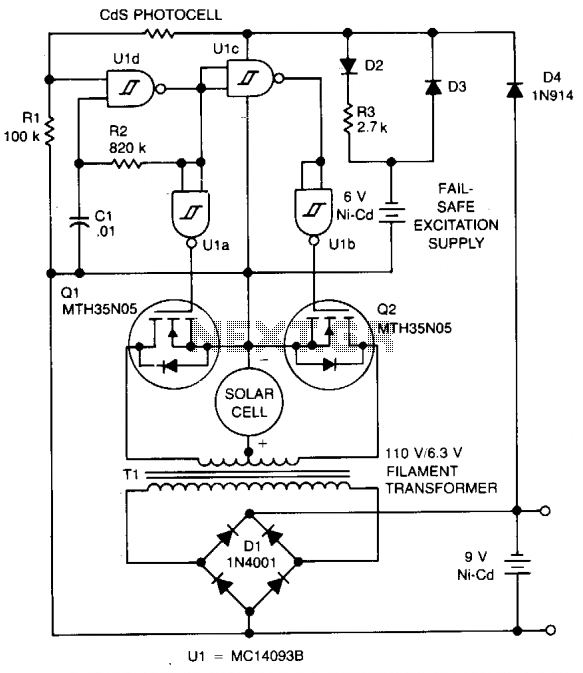
Solar Charge Controller
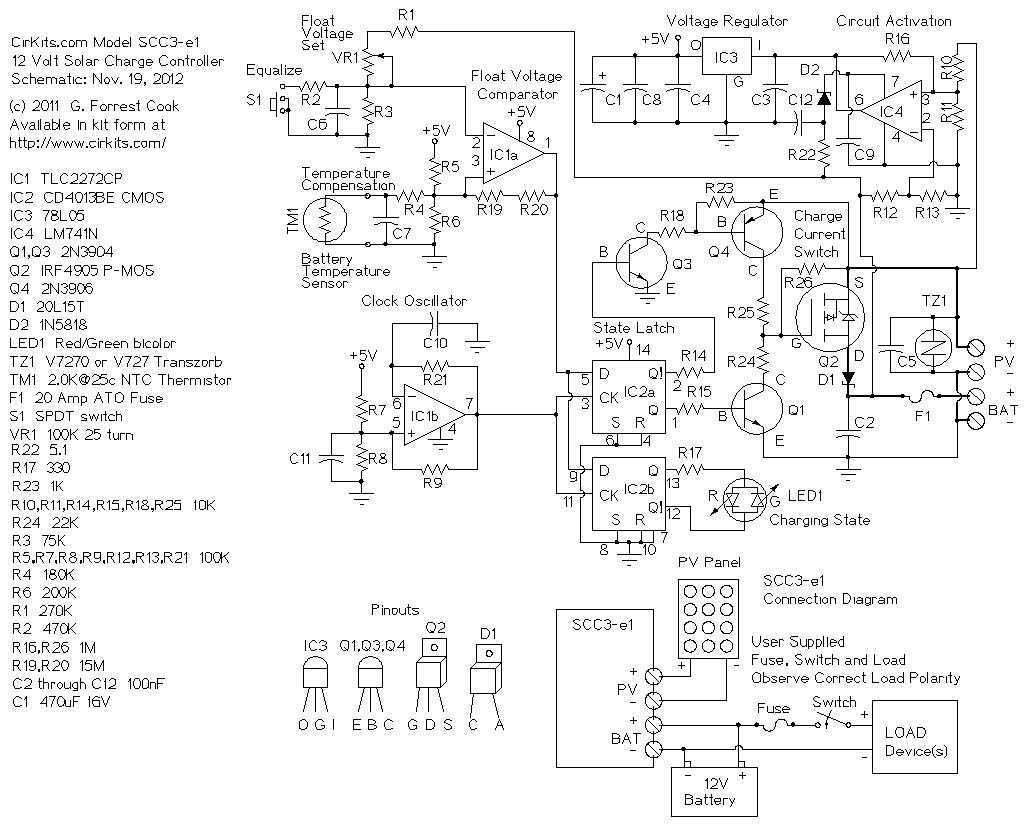
The design goals of this circuit were efficiency, simplicity, reliability and the use of field replaceable parts. A medium power solar system can be built with the SCC3, a 12V (nominal) solar panel that is rated from 100 milliamps to 20 amps, and a lead acid or other rechargeable battery that is rated from 500 milliamp hours to 400 amp hours of capacity. More: The SCC3 is a solar charge controller, its function is to regulate the power flowing from a photovoltaic panel into a rechargeable battery. It features easy setup with one potentiometer for the float voltage adjustment, an equalize function for periodic maintenance, and is designed for user-friendly operation.
The SCC3 solar charge controller operates within a specified voltage range to ensure optimal charging of the connected battery. It is designed to handle a nominal voltage of 12V, making it suitable for various solar panel configurations, particularly those rated between 100 milliamps and 20 amps. The controller incorporates a maximum power point tracking (MPPT) feature, which enhances the efficiency of energy conversion from the solar panel to the battery, particularly in varying light conditions.
The circuit includes a potentiometer that allows the user to adjust the float voltage, which is critical for maintaining the health and longevity of the battery. This adjustment capability ensures that the battery is charged to the appropriate voltage level without overcharging, which can lead to battery damage. Additionally, the SCC3 provides an equalization function, which is essential for lead-acid batteries, as it helps to balance the charge across the battery cells, thereby improving performance and extending battery life.
Field replaceable parts are integrated into the design, allowing for easy maintenance and repair. This feature is particularly beneficial in remote or off-grid installations where access to professional repair services may be limited. The simplicity of the design also facilitates straightforward installation, making it accessible for users with varying levels of technical expertise.
Overall, the SCC3 solar charge controller is engineered to provide a reliable and efficient solution for managing solar energy systems, ensuring that users can harness renewable energy effectively while maintaining the integrity of their battery systems.The design goals of this circuit were efficiency, simplicity, reliability and the use of field replaceable parts. A medium power solar system can be built with the SCC3, a 12V (nominal) solar panel that is rated from 100 milliamps to 20 amps, and a lead acid or other rechargeable battery that is rated from 500 milliamp hours to 400 amp hours of capacity.
The SCC3 is a solar charge controller, it`s function is to regulate the power flowing from a photovoltaic panel into a rechargeable battery. It features easy setup with one potentiometer for the float voltage adjustment, an equalize function for peri
🔗 External reference
The SCC3 solar charge controller operates within a specified voltage range to ensure optimal charging of the connected battery. It is designed to handle a nominal voltage of 12V, making it suitable for various solar panel configurations, particularly those rated between 100 milliamps and 20 amps. The controller incorporates a maximum power point tracking (MPPT) feature, which enhances the efficiency of energy conversion from the solar panel to the battery, particularly in varying light conditions.
The circuit includes a potentiometer that allows the user to adjust the float voltage, which is critical for maintaining the health and longevity of the battery. This adjustment capability ensures that the battery is charged to the appropriate voltage level without overcharging, which can lead to battery damage. Additionally, the SCC3 provides an equalization function, which is essential for lead-acid batteries, as it helps to balance the charge across the battery cells, thereby improving performance and extending battery life.
Field replaceable parts are integrated into the design, allowing for easy maintenance and repair. This feature is particularly beneficial in remote or off-grid installations where access to professional repair services may be limited. The simplicity of the design also facilitates straightforward installation, making it accessible for users with varying levels of technical expertise.
Overall, the SCC3 solar charge controller is engineered to provide a reliable and efficient solution for managing solar energy systems, ensuring that users can harness renewable energy effectively while maintaining the integrity of their battery systems.The design goals of this circuit were efficiency, simplicity, reliability and the use of field replaceable parts. A medium power solar system can be built with the SCC3, a 12V (nominal) solar panel that is rated from 100 milliamps to 20 amps, and a lead acid or other rechargeable battery that is rated from 500 milliamp hours to 400 amp hours of capacity.
The SCC3 is a solar charge controller, it`s function is to regulate the power flowing from a photovoltaic panel into a rechargeable battery. It features easy setup with one potentiometer for the float voltage adjustment, an equalize function for peri
🔗 External reference
